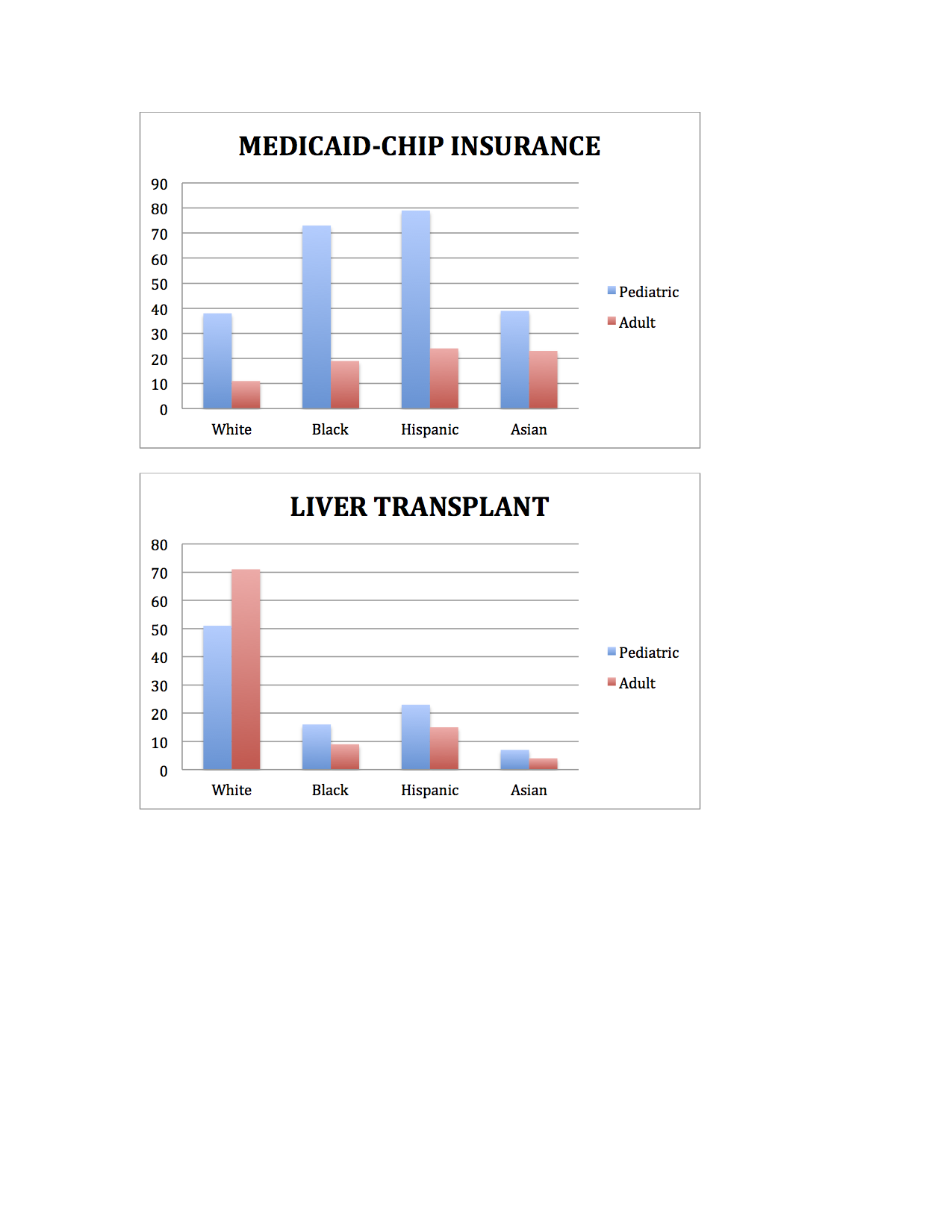Ethnic Variation in Adult and Pediatric Liver Transplantation
1Tampa General Hospital, Tampa, FL, 2Transplant Surgery, Tampa General Hospital, Tampa, FL
Meeting: 2022 American Transplant Congress
Abstract number: 1190
Keywords: African-American, Age factors, Allocation, Liver transplantation
Topic: Clinical Science » Organ Inclusive » 70 - Non-Organ Specific: Disparities to Outcome and Access to Healthcare
Session Information
Session Name: Non-Organ Specific: Disparities to Outcome and Access to Healthcare
Session Type: Poster Abstract
Date: Sunday, June 5, 2022
Session Time: 7:00pm-8:00pm
 Presentation Time: 7:00pm-8:00pm
Presentation Time: 7:00pm-8:00pm
Location: Hynes Halls C & D
*Purpose: Despite several policy reforms over the years, disparities in the access to solid organ transplantation continues to exist remains a significant barrier to liver transplant. The MELD Allocation system and subsequently the Share-35 policy (adopted June 2013) were implemented to address the inequitable access to liver transplantation (LT). The implication of these changes on adult and pediatric LT among ethnic groups is uncertain. Therefore the aim of this study, is to explore the factors associated with access to LT across ethnic groups of all age groups.
*Methods: The study period (2014 -2019) included the period after Share-35 policy (June 2013) implementation and prior to implantation of Acuity Circle and COVID pandemic (Feb/March 2020). Using the UNOS database, we identified all candidates (Pediatrics and Adults), who received liver Transplant during the study period. Data extracted included type of transplant, liver diagnosis, age, MELD/PELD score, gender and race/ethnicity. Chi square test and anova were used for comparative analysis.
*Results: During the study period, 46,926 candidates received liver transplant of which 96% were Adults, living donor LT (5%) and ethnic distribution (White 69%, Hispanic 15%, Black 9%, Asian 4% and others 3%). In contrast to the Adult recipients in which there is a gender variation with male predominance (65%), among pediatric group there was similar distribution (Male 51% and Female 49%). There was significant ethnic variation in type of insurance payor (Figure 1) and proportion of LT (Figure 2) across age groups. Among pediatric recipients, no significant difference in LT trends across ethnic groups. In contrary, among the adult recipients, though there was no change among White (71% in 2014 and 71% in 2019) and Asian (4% in 2014 and 4% in 2019), there was slight increase among Hispanic ( 13 % in 2014 and 16% in 2019) and a steady decline among Blacks ( 10% in 2014 and 7.3% in 2019).
*Conclusions: Ethnic Variation in Access to Liver Transplantation exists in both Adult and Pediatric Candidates. Future studies to explore the observed difference in Insurance payors, gender gaps among ethnic groups will provide useful insights to the non-medical factors contributing to inequitable LT access irrespective of age. Identification and understanding the key social determinants that impact LT access will be key in developing strategies to reduce and eliminate these barriers across age groups
To cite this abstract in AMA style:
Kemmer N, Malespin M, Agrawal S, Syed R, Alkhalloufi K, Alkurdi B, Albers C, Buggs J. Ethnic Variation in Adult and Pediatric Liver Transplantation [abstract]. Am J Transplant. 2022; 22 (suppl 3). https://atcmeetingabstracts.com/abstract/ethnic-variation-in-adult-and-pediatric-liver-transplantation/. Accessed January 2, 2026.« Back to 2022 American Transplant Congress

